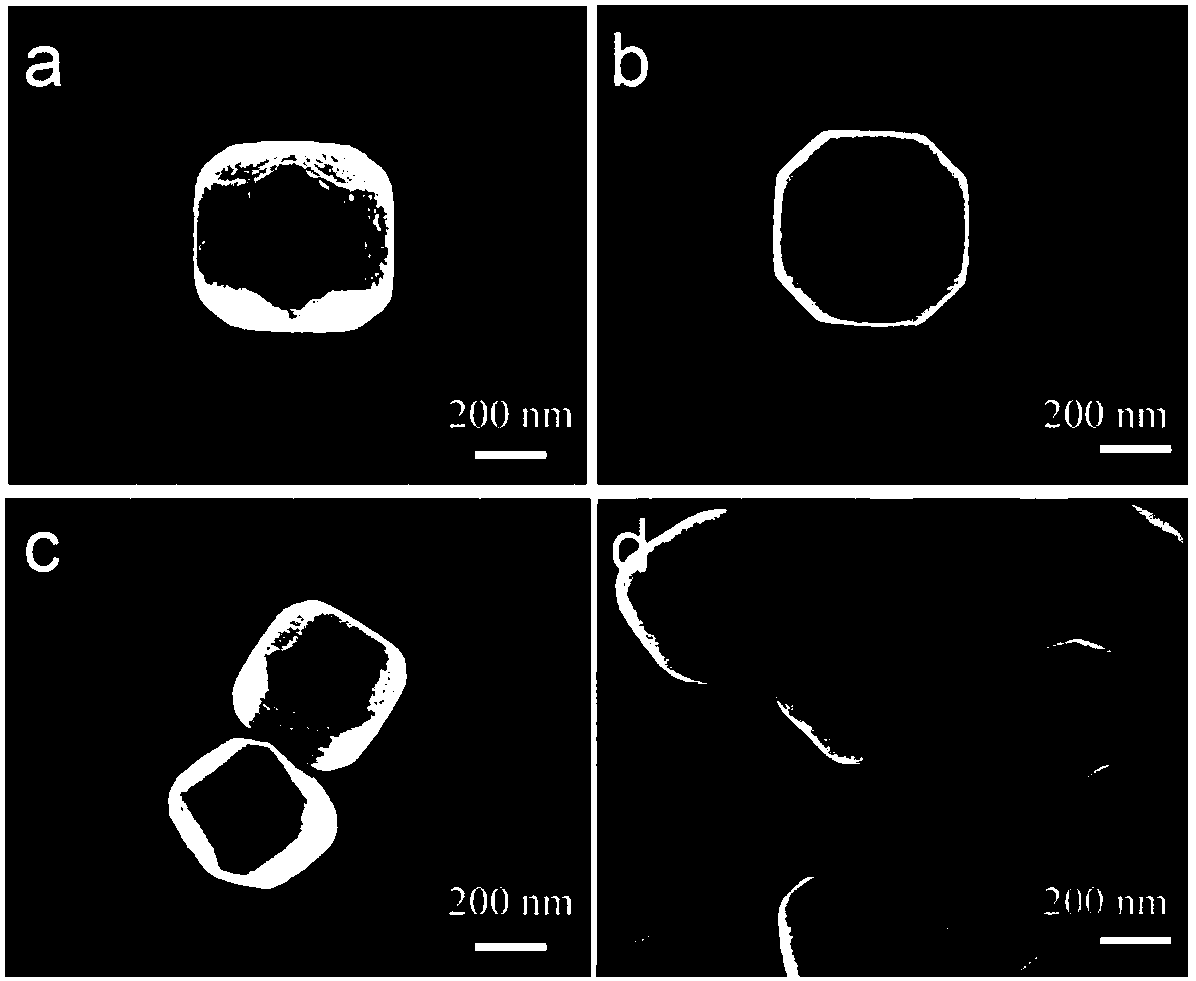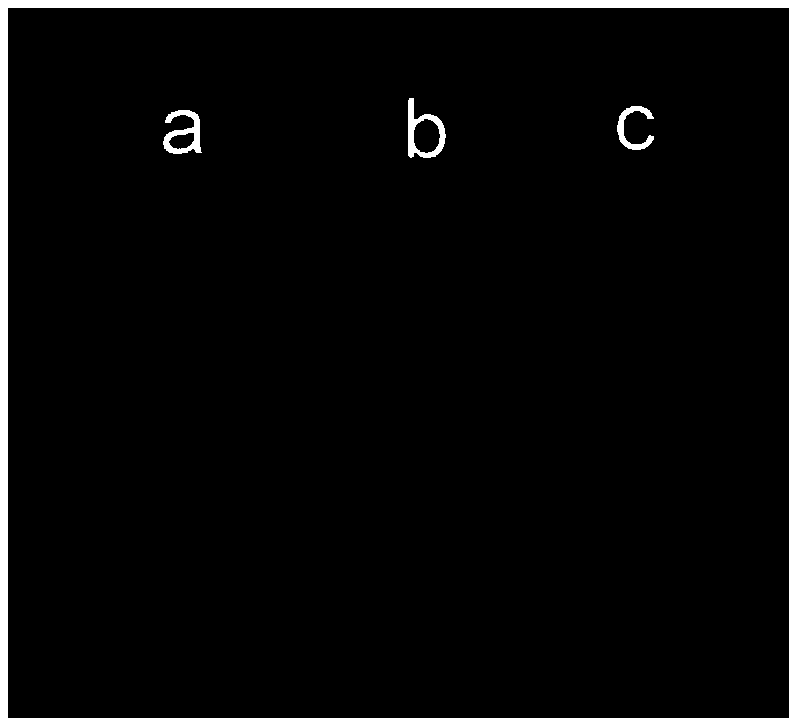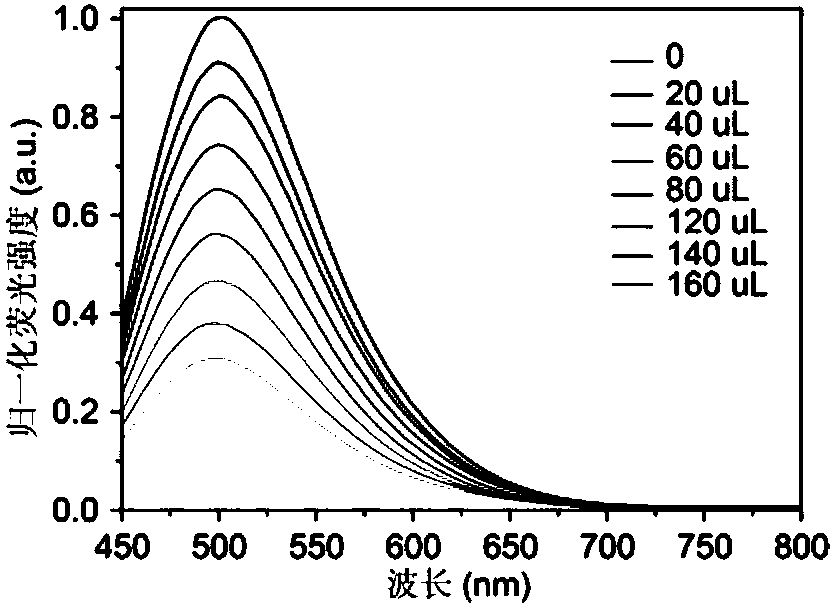Method for producing nano-MV-MOF-based fluorescent enhanced test paper for biomarker detection
A technology of test paper and nano-molecules, applied in the field of preparation of fluorescence-enhanced test paper, achieving low detection limit, easy preparation, and wide application
- Summary
- Abstract
- Description
- Claims
- Application Information
AI Technical Summary
Problems solved by technology
Method used
Image
Examples
Embodiment 1
[0022] Nanoscale molecular pincer metal-organic frameworks (MV-MOFs) and metal ions (Cu 2+ ) preparation of coordination binding materials
[0023] (1) Preparation of nanoscale MV-MOFs
[0024] 1) Add 27mg ZrCl to a 10mL test tube 4 , 30mg TBPA, 20mg MTBC, 123.0mg isonicotinic acid (or other regulatory ligands in equimolar amounts) and 3.4mL N,N-diethylformamide. Plug the test tube with a rubber stopper and insert it into a sand bath, stir at a speed of 200r / min, heat at 120°C for 24 hours, cool to room temperature, and centrifuge to obtain a powdery solid, that is, MV-MOFs. figure 1 , scanning electron microscopy showed that the size of MV-MOFs is about 500nm.
[0025] The aforementioned equimolar amounts of regulatory ligands can also be 54.7 μL formic acid, 107.7 μL trifluoroacetic acid, 175.0 mg benzoic acid, 225.5 mg p-chlorobenzoic acid and 220.2 mg p-nitrobenzoic acid. The regulatory ligand used in the nanoscale MV-MOFs in the following experiments and examples is i...
Embodiment 2
[0031] Preparation of fluorescence-enhanced test paper for biomarker detection based on nanoscale MV-MOFs
[0032] (1) Get activated nanoscale MV-MOFs and Cu in Example 1 2+ 0.36 g of the coordination binding material was dispersed in 10 mL of deionized water to prepare a 15 mM suspension of the coordination binding material.
[0033] (2) Spread the aluminum oxide chromatography paper on the cardboard with a glass rod with ferrules at both ends, control the thickness to 1mm, then take 25 μL of the suspension of the coordination binding material, and drop it evenly on the 2cm× On a 3 cm chromatographic paper, the evenly coated chromatographic paper was dried at 60°C for 24 hours to obtain a fluorescence-enhanced test paper for biomarker detection based on nanoscale MV-MOFs.
Embodiment 3
[0035] Detection of thiol amino acids
[0036] (1) Using nanoscale MV-MOFs materials for the detection of thiol amino acids
[0037] Use fluorescence titration to make a standard working curve: the instrument model used in the fluorescence titration experiment is: Agilent CaryEclipse. First, 1.0 mg of activated nanoscale MV-MOFs material was dispersed in 2 mL of deionized water by ultrasound. Next, select an excitation light source of 415 nm, under the conditions of this excitation light source, drop 1 mM copper nitrate solution into the original solution with 10 μL per drop, and record the fluorescence intensity change curve until the intensity no longer decreases. Then, 1 mM cysteine solution was dropped into the original solution with 10 μL per drop, and the fluorescence intensity change curve was recorded until the intensity no longer decreased. Take the cysteine concentration as the abscissa and the intensity as the ordinate to make a standard working curve. For ob...
PUM
| Property | Measurement | Unit |
|---|---|---|
| specific surface area | aaaaa | aaaaa |
Abstract
Description
Claims
Application Information
 Login to View More
Login to View More - R&D
- Intellectual Property
- Life Sciences
- Materials
- Tech Scout
- Unparalleled Data Quality
- Higher Quality Content
- 60% Fewer Hallucinations
Browse by: Latest US Patents, China's latest patents, Technical Efficacy Thesaurus, Application Domain, Technology Topic, Popular Technical Reports.
© 2025 PatSnap. All rights reserved.Legal|Privacy policy|Modern Slavery Act Transparency Statement|Sitemap|About US| Contact US: help@patsnap.com



